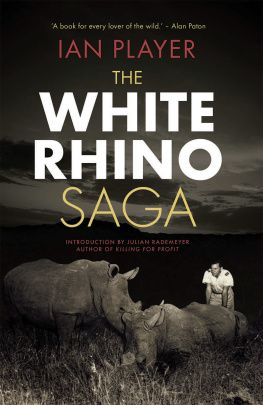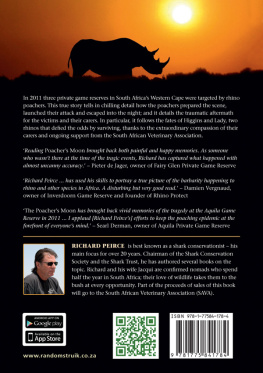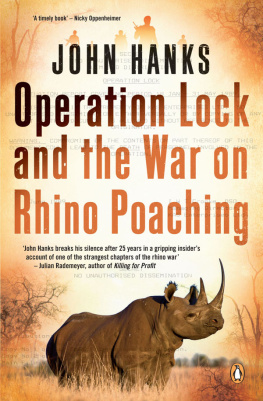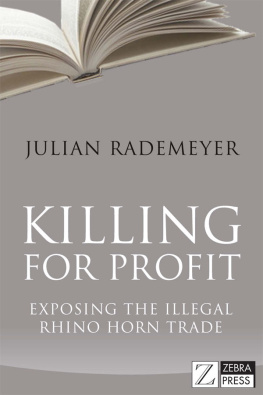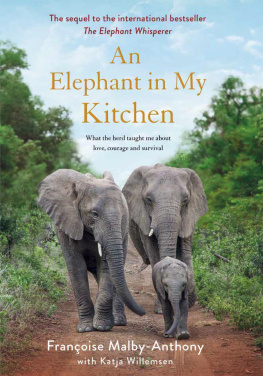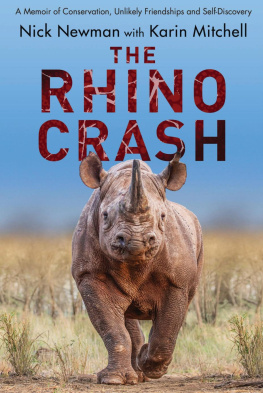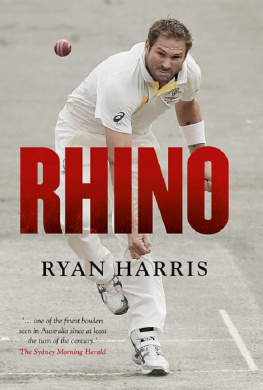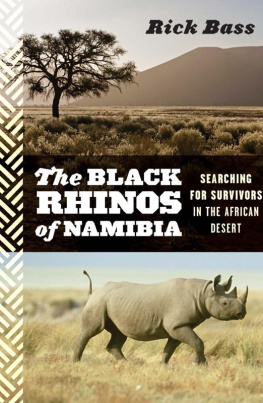The White Rhino Saga
Ian Player
JONATHAN BALL PUBLISHERS
JOHANNESBURG & CAPE TOWN
The White Rhino Saga back in print after more than 40 years is more relevant than ever as our rhino population faces a deadly poaching onslaught. With a new introduction by Julian Rademeyer and a missing chapter never before published, a new generation of dancers can appreciate and learn from the extraordinary story of how the white rhino was saved from extinction four decades ago.
From Ian Players very first visit to the Umfolozi Game Reserve in South Africas Zululand in 1952, the salvation of the white rhino from extinction became a personal obsession. The white rhino had roamed over the Southern half of the African continent in large numbers during the nineteenth century and before. By the 1960s fewer than five hundred remained, confined to 72 000 acres, not nearly enough territory for them to remain healthy and alive.
The problem confronting Player and his coworkers was twofold: how to repopulate the game reserves of Africa where white rhinos had once lived, and how to ensure the survival of the species by distributing breeding groups amongst the zoos of the world. The techniques for capturing and transporting the huge animals are fascinating.
The White Rhino Saga , Alan Paton writes in his foreword, is a book for every lover of the wild. The danger of captures, the disappointments, the ultimate successes, make a splendid tale. It is a tale of an endangered animal, and of the man who set out to save it.
Men, Rivers and Canoes
Big Game, with TC Robertson
Wilderness and the Human Spirit. An Anthology, with Sir Laurens van der Post
Zululand Wilderness: Shadow and Soul
Voice from the Wilderness column in the Daily News , published as:
Voice from the Wilderness
More from the Wilderness
Man and the Wilderness
Reflections of a Wilderness Man
Along a Wilderness Path
People and Wilderness
To Magqubu Ntombela and all
the other Game Guards who
have taught us so much
Sponsors Note
Few accounts of conservation efforts in the world today have what one would call a happy ending. When The White Rhino Saga was originally published it was, indeed, one of those stories, due to the efforts of Dr Ian Player and his dedicated colleagues who worked from the 1950s onward to bring the white rhino back from the brink of extinction. Through their insight and actions the world has retained an incredible natural asset in the white rhino, and Dr Players contributions cannot be overstated. Nowhere was this fact more evident to us than during two separate occasions occurring on a trip from South Africa to Southeast Asia.
The first time we came to understand the scope of what Dr Player had accomplished was when the Wildlife Protection Solutions team first had the good fortune to meet him in his home just outside Howick, South Africa. During our efforts to assess the current state of rhino conservation and secure land to start a rhino protection and breeding programme, we were eager to learn more about Dr Players history and views on the status of rhinos today. As we made our way through Dr Players kitchen and into his parlour, we were struck by the depth and breadth of his incredible library of literature, reflecting his passions not only for conservation, but for a great many other topics and philosophies as well. Under the watchful eye of a statue of Magqubu Ntombela (Ians lifelong friend, mentor, and guide), he told us the White Rhino Saga in his own words. To describe such an experience is difficult at best; to describe its impact on us, less so. Not only were we incredibly moved by Ians words and stories, but we also came to realise the broader implications of what he has accomplished. Through his efforts to save the white rhino, Dr Player has given the world a model that can be applied to many species currently under threat of extinction. By documenting the narrative behind the process, he has given us a manual vividly illustrating its execution. For both of these contributions, the world owes Dr Player an incredible debt of gratitude.
Fundamental to Dr Players approach to recovering the white rhino was the idea that the species needed more land, more breeding pairs, and sufficient dispersion to protect the overall population from threats in any one area. Implementation of a plan to address these three issues would require intensive management actions on the part of conservationists, and Dr Player and his colleagues rose to the challenge by literally inventing the methods of rhino capture and transport (which are, fundamentally, the same ones still used today) needed to accomplish their mission.
The success of these efforts allowed the white rhino population to increase from the remaining 437 in one location to an estimated 20 000 animals worldwide within the span of 20 years. At that point, the white rhino was largely regarded as a key conservation success story. Sadly, the future of the rhinos is less certain today: the demand for rhino horn in the Far East is exploding as the middle class rises there and uses its newfound wealth to purchase products once only available to a fraction of the populace.
It was our investigation of this international rhino trade that led us to attend the 16th Conference of Parties held by CITES (the Convention on International Trade in Endangered Species) in Thailand. During this leg of our journey, the importance of Dr Players work stood out to us again; this time on a global stage. The South African government, currently engaged in a literal war for the future of the rhinos, was soliciting suggestions from the international community on how to cope with the black market forces driving the rhinos toward extinction. As the debate became more and more heated, Dr Player was mentioned numerous times, and one speaker even elicited a round of applause through an impassioned plea to the delegates not to let the future of the white rhino and Dr Players legacy slip into history as merely a fleeting success. The white rhino, its story, and Dr Players lifetime of work, are simply too important to lose.
As it stands now, the future of the five extant rhino species remains uncertain. Though the rhinos are getting more attention than ever before, the numbers are simply not with the animals. For example, at the time of this writing, the Javan rhino population is estimated to be fewer than 50 individuals, surviving in only one park on the far western end of Java. The species (and the conservationists working to help them) must contend with issues of genetic homogeneity often found in small populations, loss of habitat, and pressures from invasive species which compete for the rhinos native food sources. The Sumatran Rhino is not faring much better, with fewer than 100 animals remaining in the wild, scattered amongst small, isolated populations with no possibility for migration to maintain genetic diversity.
In the end, if we are to ensure that rhinos live in the world our childrens children inhabit, humanity must learn what works in species conservation and apply those lessons practically. The White Rhino Saga provides one such lesson. We at Wildlife Protection Solutions hope that its re-publication, which comes at a time so critical to rhino conservation, will catalyse not only conversation and awareness, but concrete actions that secure rhinos (and other endangered wildlife) the habitat, breeding populations, and genetic diversity each species needs for continued survival.
Eric Schmidt
Executive Director
Wildlife Protection Solutions
www.WildlifeProtectionSolutions.org
July 2013
Forty Years On The Rhinos Plight

